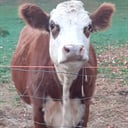Which is the world's second heaviest rodent after the capybara?
The Eurasian beaver (Castor fiber) or European beaver is a beaver species that was once widespread in Eurasia, but was hunted to near-extinction for both its fur and castoreum. At the turn of the 20th century, only about 1,200 beavers survived in eight relict populations in Europe and Asia. It has been reintroduced to much of its former range, and now occurs from Spain, Central Europe, Great Britain and Scandinavia to a few regions in China and Mongolia. It is listed as Least Concern on the IUCN Red List, as it recovered well in most of Europe. It is extinct in Portugal, Moldova, and Turkey.
The Eurasian beaver is one of the largest living rodent species and the largest rodent native to Eurasia. Its head-to-body length is 80–100 cm (31–39 in) with a 25–50 cm (9.8–19.7 in) long tail length. It weighs around 11–30 kg (24–66 lb). In Norway, adult males average 21.5 kg (47 lb), while females average 23.1 kg (51 lb). Adults from the same country average 18.4 kg (41 lb). By the average weights known, it appears to be the world's second heaviest rodent after the capybara, and is slightly larger and heavier than the North American beaver. The largest recorded specimen weighed 31.7 kg (70 lb), but it can exceptionally exceed 40 kg (88 lb).
More Info:
en.wikipedia.org












